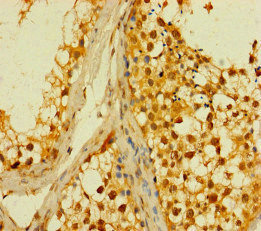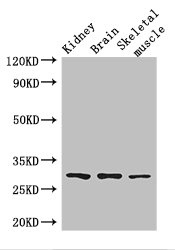Presents phospholipase and nuclease activities, depending on the different physiological conditions. Interaction with Mitoguardin (MIGA1 or MIGA2) affects the dimer conformation, facilitating the lipase activity over the nuclease activity. Plays a key role in mitochondrial fusion and fission via its phospholipase activity. In its phospholipase role, it uses the mitochondrial lipid cardiolipin as substrate to generate phosphatidate (PA or 1,2-diacyl-sn-glycero-3-phosphate), a second messenger signaling lipid. Production of PA facilitates Mitofusin-mediated fusion, whereas the cleavage of PA by the Lipin family of phosphatases produces diacylgycerol (DAG) which promotes mitochondrial fission. Both Lipin and DAG regulate mitochondrial dynamics and membrane fusion/fission, important processes for adapting mitochondrial metabolism to changes in cell physiology. Mitochondrial fusion enables cells to cope with the increased nucleotide demand during DNA synthesis. Mitochondrial function and dynamics are closely associated with biological processes such as cell growth, proliferation, and differentiation. Mediator of MYC activity, promotes mitochondrial fusion and activates AMPK which in turn inhibits YAP/TAZ, thereby inducing cell growth and proliferation. The endonuclease activity plays a critical role in PIWI-interacting RNA (piRNA) biogenesis during spermatogenesis. Implicated in spermatogenesis and sperm fertility in testicular germ cells, its single strand-specific nuclease activity is critical for the biogenesis/maturation of PIWI-interacting RNA (piRNA). MOV10L1 selectively binds to piRNA precursors and funnels them to the endonuclease that catalyzes the first cleavage step of piRNA processing to generate piRNA intermediate fragments that are subsequently loaded to Piwi proteins. Cleaves either DNA or RNA substrates with similar affinity, producing a 5' phosphate end, in this way it participates in the processing of primary piRNA transcripts. piRNAs provide essential protection against the activity of mobile genetic elements. piRNA-mediated transposon silencing is thus critical for maintaining genome stability, in particular in germline cells when transposons are mobilized as a consequence of wide-spread genomic demethylation. PA may act as signaling molecule in the recognition/transport of the precursor RNAs of primary piRNAs. Interacts with tesmin in testes, suggesting a role in spermatogenesis via association with its interacting partner.









